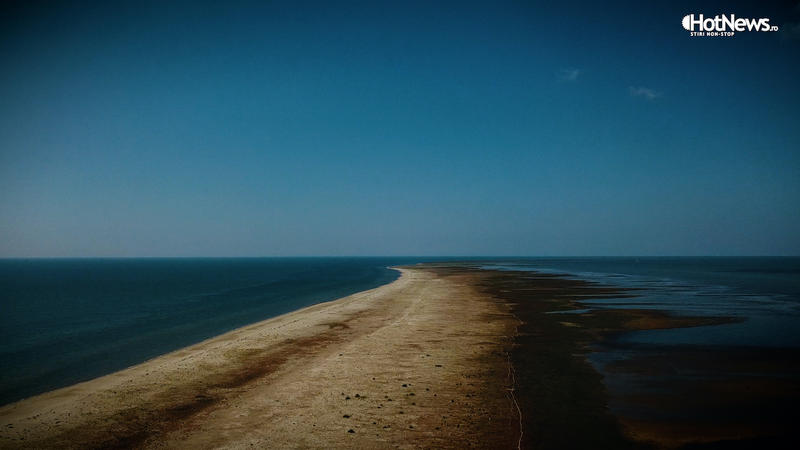
A team of researchers from the Romanian GeoEcoMar Institute demonstrates how seriously the works to improve the Danube’s arms carried out in the delta over time have affected the fish population. Official reports from licensed fishermen in the Delta indicate a four-fold reduction in catches from the 1970s to today. Watch the video made by HotNews.ro.
“Think of the delta channels as blood vessels in the body. When the blood stops circulating, oxygen no longer reaches the vital organs to provide oxygenation. This phenomenon also occurs in the Delta: when the water stops flowing, it stagnates and the bacteria consume oxygen and anoxia conditions are reached,” explains Christian Theodorou, PhD in biogeochemistry at the GeoEcoMar Institute.
The other day I accompanied Cristian Teodora and Adrian Stanica, director of GeoEcoMar, to some canals between the Sulina and Sfantu Gheorghe arms, where researchers were measuring the oxygen levels in the water to see if it could still support life or not. .
“We are located on Garla Imputita, in the heart of the Delta, not far from Sulina. I measured dissolved oxygen in the water and found a saturation close to the atmospheric concentration of 98% at the surface; when the sensor went deeper, we reached 32% dissolved oxygen, which means very little for an aquatic system,” the researcher told us.
Delta catch quadruples from 1970s to today
Fish in the delta are becoming scarcer, and everyone from local residents, fishermen, tourists to the authorities admit it.
Official data provided by the Danube Delta Biosphere Reserve Administration, based solely on reports from authorized commercial fishermen, show that while in the 1970s 7,500-8,000 tons of fish were reported annually, in the 1990s this number dropped to 4,500 tons. so that now it reaches 2500-3000 tons.
And the number of fishermen who make a living exclusively from this occupation is sharply decreasing. For example, the mayor of Sfantu Gheorghe, Valeriu Sidorenko, says that 20 years ago there were about 120 fishermen in the commune, and now there are about 60, “of which three-quarters are engaged in activities other than fishing”:
“Many people work in tourism, and fishing has become a second job,” says Valeriu Sidorenko.

Sakhalin Island. A picture taken by a drone during filming
Researcher Laura Duciu has a PhD in river geomorphology and has studied the impact of the development of the Sfantu Gheorghe branch on the delta. She told us that on the Sfantu Gheorghe arm, from 1981 to 1994, they shortened the distance between the delta entrance and the sea by 32 kilometers.
“The aim of these works was to improve navigation, but even if this aim was achieved, the flow of sediment and water to the straightened meanders was affected. Thus, not only the meanders were negatively affected, but also the interior of the delta and the exchange of water and precipitation that normally occurred with the lakes of the delta through the connecting channels.”
But what will the future be like? Can we imagine the Delta without fish, without birds, without life?
Scientists know what needs to be done to prevent this apocalyptic future from happening.
“The first task is to clean the canals, this is to restore the circulation that allows the oxygenated water to circulate, so that the conditions that allow fish and not only fish to live can be restored in many areas that are now absolutely deficient in oxygen. . This is on the one hand.
On the other hand, while many fish have died, other organisms have died, some population recovery programs would be absolutely necessary,” says Adrian Stenica, director of GeoEcoMar.
However, in Romania we are not talking about unsealing for the first time. The European Union allocated more than one billion euros to the Danube Delta, part of which was supposed to go to these works, according to a press investigation published by G4 Media.
But, as has often happened in Romania in recent years, the way the money was spent turned into a criminal case, which is now being investigated by the European Public Prosecutor’s Office.
Watch the HotNews.ro video about what happened in the Delta with the fish population and what plans state officials have to save life in this biosphere reserve.
- Read also: VIDEO Is it true that the fish you eat from locals in the Danube Delta comes from a hypermarket?
Source: Hot News RO
Robert is an experienced journalist who has been covering the automobile industry for over a decade. He has a deep understanding of the latest technologies and trends in the industry and is known for his thorough and in-depth reporting.